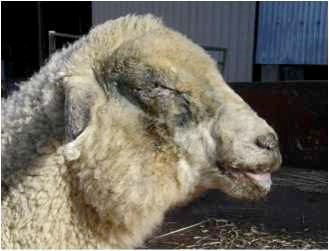Grazing brassicas and livestock health
 PRODUCTION ADVICE - JUNE 2021 - ANIMAL BIOSECURITY & WELFARE
PRODUCTION ADVICE - JUNE 2021 - ANIMAL BIOSECURITY & WELFARE
By Katelyn Braine
District Veterinarian
M: 0499 339 018 | katelyn.braine@lls.nsw.gov.au
 If you experience feed gaps over winter and spring, you might want to consider grazing brassicas as a possible solution. They are high in energy (11-14 ME/KG DM), and protein (15-25 per cent), as well as having good digestibility. Grazing brassicas can produce weight gains around 150-250 g/hd/day in lambs and 0.8-1.2 kg/hd/day in growing cattle. A note of caution, however. In some situations, brassicas can impact the health of your livestock if grazing is not well managed.
If you experience feed gaps over winter and spring, you might want to consider grazing brassicas as a possible solution. They are high in energy (11-14 ME/KG DM), and protein (15-25 per cent), as well as having good digestibility. Grazing brassicas can produce weight gains around 150-250 g/hd/day in lambs and 0.8-1.2 kg/hd/day in growing cattle. A note of caution, however. In some situations, brassicas can impact the health of your livestock if grazing is not well managed.
Grazing immature brassica crops can cause photosensitisation in livestock. Photosensitisation is a condition in which skin is damaged when photodynamic agents found in the diet react to sunlight. Signs of photosensitisation are normally seen around the face and ears. It usually starts with swelling of the ears and/or muzzle, which can then result in blistering and scabs. The condition can also cause death. Young livestock, especially lambs, are prone to photosensitisation, whereas animals with dark pigmented skin or a good wool covering are less susceptible. Of the brassica family, rapes and kales are more commonly associated with photosensitisation, whereas turnips, swedes and hybrids are less likely to cause photosensitisation.
If signs of photosensitisation occur while grazing brassicas, remove the stock from the crop and place them in a well-shaded area. Symptoms should reverse over a couple of weeks. To prevent the condition, graze mature crops, introducing the stock gradually.
Polioencephalomalacia (PEM) is a neurological disease in sheep and cattle that results in destruction of brain cells and swelling of the brain. It can be caused by a deficiency in thiamine (vitamin B1) or excess sulphur. Brassicas can be a source of high dietary sulphur, which can predispose stock to PEM. Signs of PEM in livestock include sudden onset of blindness, muscle tremors and convulsions, head-pressing, star gazing (opisthotonos), rapid eye movements (nystagmus), incoordination, recumbency and later death. Livestock of any age can be affected, but is more commonly seen in young livestock. Cattle are at risk of sulphur toxicity when their diet comprises more than 40 per cent brassicas, or if their whole diet contains more than 0.5 per cent sulphur. Brassica crops that have been fertilised with sulphur-based fertilisers or crops that are stressed have a higher risk of PEM.
If clinical signs are caught early, PEM can be successfully treated with vitamin B1. Prevention can be achieved by gradually introducing the stock to the brassica crop, not grazing the crop while it is stressed and providing access to an alternative grazing source or supplementary feed.
Nitrate toxicity is caused by high nitrate levels in feed and usually occurs in late autumn or winter, particularly during a flush of growth after rain, or when weather is dull and overcast. Brassica crops are naturally high in nitrates and the nitrate level increases in the plant when it flowers or following regrowth. The application of nitrogen fertilisers also elevates the risk of nitrogen concentrations in plants.
Sheep and cattle are usually able to tolerate nitrates in the diet, but poisoning can occur when stock suddenly consume high levels. Following ingestion of high dietary nitrates, a build-up of nitrates in the blood affects the oxygen-carrying capacity which can often result in sudden death. Other signs of nitrate toxicity in livestock include scours, salivation, abdominal pain, abortions, staggers, and convulsions.
You can reduce the risk of nitrate toxicity by gradually introducing livestock to grazing brassicas. This can be done by restricting grazing to 1-2 hours during the middle of the day, and slowly increasing to unrestricted access in 7-10 days. You should also avoid introducing hungry stock to brassicas by filling them up with roughage prior to being introduced to the crop.
While grazing brassicas, it is also important to know that they are generally highly digestible and have a low fibre content, so providing continual access to hay may provide a more balanced diet, improve weight gains, and reduce the effects on animal health.
Other potential animal health issues that can occur while grazing brassicas include increased risk of clostridial diseases, especially pulpy kidney and bloat. So, it is important to vaccinate stock at least two weeks before they start grazing the brassica crop, with 5 or 6-in-1, and provide bloat prevention such as bloat blocks and a source of roughage while they are grazing brassicas.
For more information regarding livestock health and grazing brassicas, you can contact your District Vet by calling 1300 795 299 or drop into a nearby Local Land Services office.